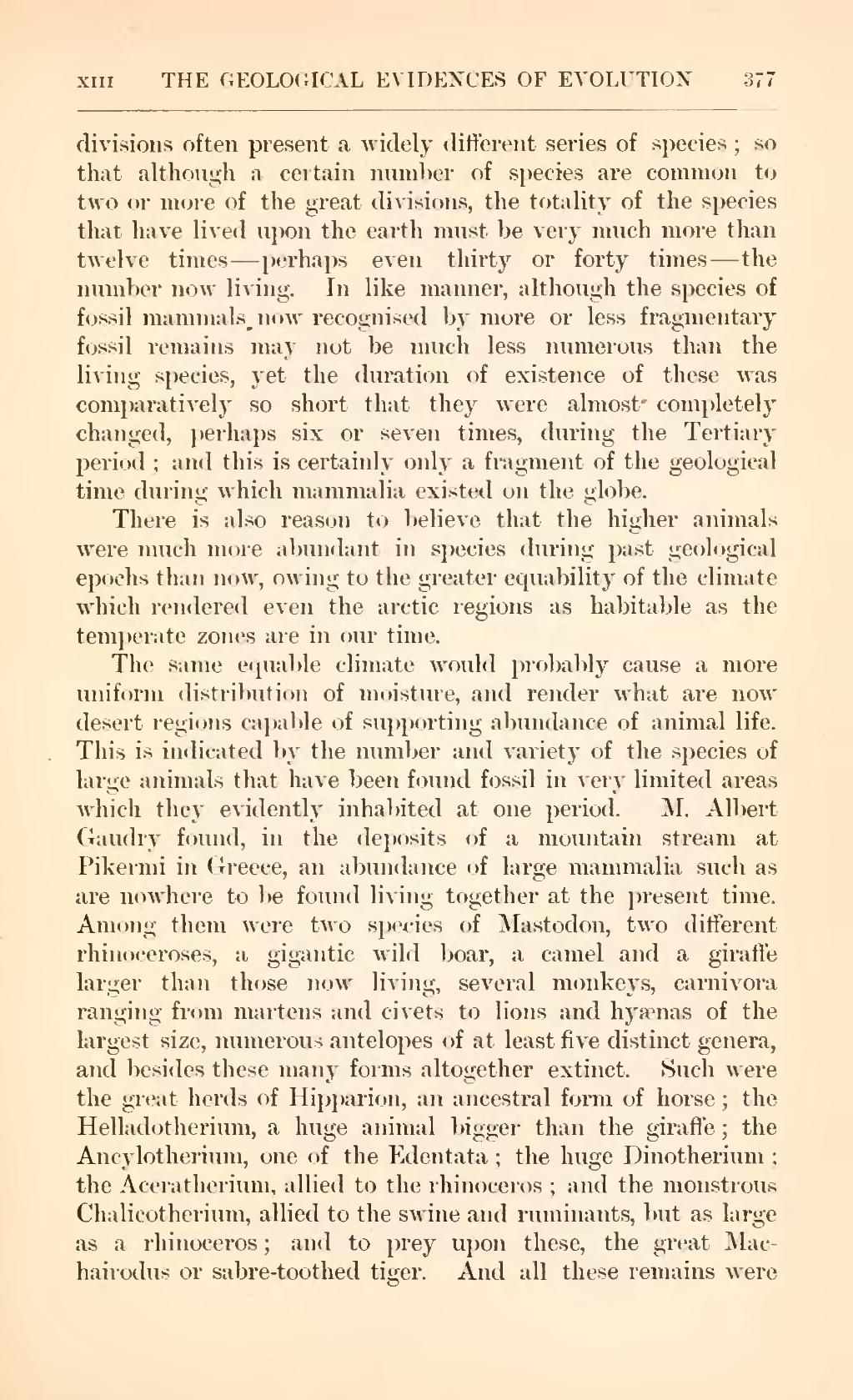divisions often present a widely different series of species; so that although a certain number of species are common to two or more of the great divisions, the totality of the species that have lived upon the earth must be very much more than twelve times—perhaps even thirty or forty times—the number now living. In like manner, although the species of fossil mammals now recognised by more or less fragmentary fossil remains may not be much less numerous than the living species, yet the duration of existence of these was comparatively so short that they were almost completely changed, perhaps six or seven times, during the Tertiary period; and this is certainly only a fragment of the geological time during which mammalia existed on the globe.
There is also reason to believe that the higher animals were much more abundant in species during past geological epochs than now, owing to the greater equability of the climate which rendered even the arctic regions as habitable as the temperate zones are in our time.
The same equable climate would probably cause a more uniform distribution of moisture, and render what are now desert regions capable of supporting abundance of animal life. This is indicated by the number and variety of the species of large animals that have been found fossil in very limited areas which they evidently inhabited at one period. M. Albert Gaudry found, in the deposits of a mountain stream at Pikermi in Greece, an abundance of large mammalia such as are nowhere to be found living together at the present time. Among them were two species of Mastodon, two different rhinoceroses, a gigantic wild boar, a camel and a giraffe larger than those now living, several monkeys, carnivora ranging from martens and civets to lions and hyaenas of the largest size, numerous antelopes of at least five distinct genera, and besides these many forms altogether extinct. Such were the great herds of Hipparion, an ancestral form of horse; the Helladotherium, a huge animal bigger than the giraffe; the Ancylotherium, one of the Edentata; the huge Dinotherium; the Aceratherium, allied to the rhinoceros; and the monstrous Chalicotherium, allied to the swine and ruminants, but as large as a rhinoceros; and to prey upon these, the great Machairodus or sabre-toothed tiger. And all these remains were
